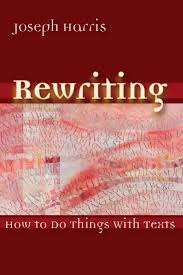Sorry undergrads. This one’s focused more towards grad students, but it’s still good information to know. In fact, it can really be adapted to help with any sort of scholarly paper. You know what – never mind. This post is for everyone. Entering the scholarly conversation is an important part of graduate education because as a graduate student you are becoming a part of the conversation and contributing to the field rather than just reporting on it. There are four key things that a strong graduate-level scholarly paper will cover (and strong undergraduate papers as well). They are:
- Coming to terms. The writer needs to show that they are familiar with the people, research, and theories relevant to their paper.
- Forwarding. This is when a writer finds existing material and pulls it into the paper for research purposes. This is most often done by using these four techniques:
- Illustrating. Showing how the existing material ties into your topic. This is often cued by phrases like “this shows us that…”
- Borrowing. Just like it sounds. Borrowing prior research done by another scholar. A lot of the time this is seen when authors say “This principle was discovered by… and is a foundation for my theory.”
- Authorizing. Cued by name-dropping e.g. “Such-and-such did this, so I can do it too.”
- Extending. Taking an original idea from another scholar and expanding upon it. This can look like “So-and-so started with this idea, but further research was needed into this area, so I’m doing it.”
- Countering. The writer must disagree with fellow scholars. This is essential; otherwise the paper isn’t a scholarly research paper. The purpose of these kinds of papers is to show how the writer is filling a gap in the knowledge. If the writer doesn’t disagree with someone, they are most likely not filling in a gap, just agreeing with what went before.
- Taking an approach. A combination of showing how the paper helps the field and telling readers what will be done.
These moves help you to truly enter the conversation, not just look up stuff at the library and summarize it. As scholars, people in your field will be looking for you to contribute to the conversation that is happening and stay current with the trends
As people (professors and others in the field) are reading, they will be looking to make sure the writer has done all these things. For a lot of papers in the humanities, these four points will be woven throughout the paper, but in other disciplines, these moves may happen primarily in the literature review or introduction (if your discipline includes a literature review). This approach is also a good way for writers to help themselves be organized and structured as they are writing. This isn’t a complete checklist by any means – you actually have to write the paper and make it sound good – but these four items are crucial to writing a solid scholarly paper.
These four moves have been adapted from Joseph Harris’s Rewriting. It can be found on Amazon here:
http://www.amazon.com/Rewriting-How-Things-With-Texts/dp/0874216427
